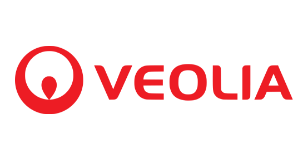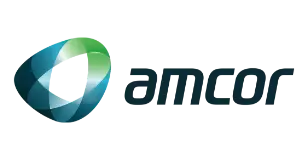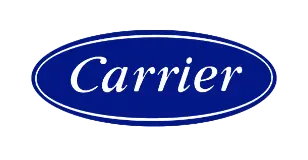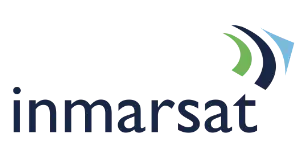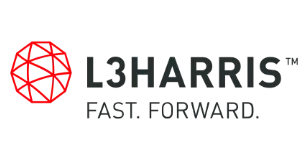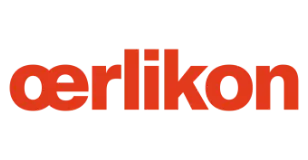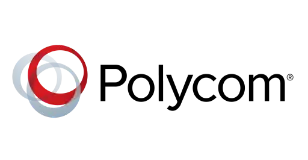
Global Rapid Self-healing Gel Market Research Report: Forecast (2023-2028)
Global Rapid Self-healing Gel Market Report - By Cross Linking (Physical, Chemical), By Application (Wound Healing, Drug Delivery, Tissue Engineering, 3D Printing, Surface Coating,... Soft Robots, Others), and Others Read more
- Healthcare
- Apr 2023
- Pages 185
- Report Format: PDF, Excel, PPT
Market Definition
Self-healing gels & their potential applications are a notable part of medical research & development. These gels can repair structures by detecting environmental changes and accordingly change their characteristics & operational methods. Their mechanical, structural, & rheological properties makes them ideal for self-healing wounds.
Market Insights & Analysis: Rapid Self-healing Gel Market (2023-28):
The Global Rapid Self-healing Gel Market is expected to grow at a CAGR of around 7.4% during the forecast period, i.e., 2023-28. Most of the market expansion would be propelled by the growing application of rapid self-healing gel materials, the rising popularity of tissue engineering & regenerative medicine, massive R&D investments in biomedical engineering, and the mounting demand for novel drug delivery systems.
Self-healing hydrogels can repair themselves and thus have a prolonged life span even after becoming exposed to external tensions. It is why self-healing hydrogels are accompanied by an injection that keeps the wound in its natural state and extends the dressing life while also providing comfort & pain relief. In addition, hydrogels can also be used for fabricating novel drug delivery systems to release drugs at controlled rates & with more precision.
| Report Coverage | Details |
|---|---|
| Study Period | Historical Data: 2018-21 |
| Base Year: 2022 | |
| Forecast Period: 2023-28 | |
| CAGR (2023-2028) | 7.4% |
| Regions Covered | North America: The US, Canada, Mexico |
| Europe: Germany, The UK, France, Spain, Italy, Rest of Europe | |
| Asia-Pacific: China, India, Japan, South Korea, Australia, Rest of Asia-Pacific | |
| South America: Brazil, Argentina, Rest of South America | |
| The Middle East & Africa: The UAE, South Africa, Saudi Arabia, Rest of MEA | |
| Key Companies Profiled | Axelgaard, Hydromer Inc., Alliqua Biomedical, Contura International, Cytogel Pharma, Scapa Healthcare, R&D Medical Products, Inc., Advanced Medical Solutions Group PLC, Katecho Inc., Cardinal Health, Biogelex, Conforma, Ferentis, and ABC Farma Internacional |
| Unit Denominations | USD Million/Billion |
Furthermore, the growing trend of hydrogels in biomedical applications is another prominent aspect projected to drive the market through 2028. It owes to the compatibility of hydrogels for developing artificial natural structures like cartilage, ligaments, and tendons. Despite being soft, the material has extremely tough tissues, which is why its mechanical strength is high.
Moreover, self-healing hydrogels can convert into a liquid under shearing pressure and revert to their original state once the shearing forces are removed. As a result, it makes them ideal for in-situ injection of cells, medications, or proteins into the area that has to be healed. Hence, these aspects are set to create lucrative prospects, thus enhancing the Global Rapid Self-healing Gel Market size in the coming years.

Rapid Self-healing Gel Market Driver:
Ever-rising Incidence of Chronic & Trauma Wounds Worldwide: The prime aspect projected to drive the Global Rapid Self-Healing Gel Market during 2023-28 is the growing cases of trauma & chronic wounds worldwide, especially among the geriatric population. Moreover, the rising number of clinical trials to improve the effectiveness of rapid self-healing gels is another prominent aspect expected to stimulate market expansion over the forecast years.
Rapid Self-healing Gel Market Growth Restraint:
Lack of Sustainability in Man-made Hydrogels in Water & Permanent Chemical Bonds: In the case of water & permanent chemical linkages that crosslink the molecules of hydrogels, it becomes challenging for man-made hydrogels to sustain their properties, i.e., a major growth restraint for the market. Besides, the longer time taken by hydrogels to heal the damages is another significant factor projected to hamper the market expansion in the coming years.
Rapid Self-healing Gel Market (2023-28): Segmentation Analysis
Based on Crosslinking:
- Physical
- Chemical
Among both, chemical crosslinking held a larger share of the market in the previous few years. It involves the use of covalent bonding between polymer chains in order to develop self-healing hydrogel. Modifying chemical bonds is what results in the development of self-healing properties in hydrogels. Once external stress is applied & removed, self-restoring materials revert to their original shape & mechanical characteristics. The benefits of chemically crosslinked hydrogels, such as enhanced stability, durability, and higher tensile, shear, & bending strength than physically crosslinked hydrogels, are the main reasons that resulted in their larger market share in the past years.
Based on Application:
- Wound Healing
- Drug Delivery
- Tissue Engineering
- 3D Printing
- Surface Coating
- Soft Robots
Here, the drug delivery application is expected to acquire a significant market share during 2023-28. It attributes to the mounting demand for novel drug delivery systems and massive R&D investments in self-healing gels. Researchers in the US have introduced a self-healing hydrogel that can be injected using a syringe, carry two drugs at once, and doesn’t involve surgical implantation, which allows for more convenient treatment of numerous conditions & enhanced adaptability in drug administration. Since self-healing hydrogels can be molded into precise shapes, provide treatment over longer durations, and target specific tissues with treatment due to their static nature, it projects a noteworthy share of the drug delivery application in the Global Rapid Self-Healing Gel Market during the forecast period.
Rapid Self-healing Gel Market (2023-28): Regional Projections
Geographically, the Global Rapid Self-healing Gel Market expands across:
- North America
- South America
- Asia-Pacific
- Europe
- The Middle East & Africa
Of all regions globally, North America is projected to continue its dominance in the market during 2023-28. It owes to the extensive presence of renowned public & private academic institutions, which are substantially investing in developing innovative gels & treatments, coupled with the mounting prevalence of chronic wounds across the region.
Moreover, the leading players operating in the regional market are signing patent license agreements and launching new products based on polymers & resins in order to cater to a wide range of applications. In addition, remarkable advancements in healthcare & pharmaceutical industries and ever-increasing medical expenditure are other prominent aspects projected to drive the Rapid Self-Healing Gel Market in North America during the forecast years.
On the other hand, Asia-Pacific Rapid Self-Healing Gel Market is projected to record a steady growth rate in the coming years. It attributes to the mounting demand for novel drug delivery systems in different countries, coupled with increasing investments in & mounting demand for specialty products in the healthcare sector.
Rapid Self-healing Gel Industry Recent Development:
- In October 2021, Scapa Healthcare & Synedgen Inc signed a licensing agreement for two novel innovative wound care treatments developed using Synedgen’s proprietary glycochemistry technology platform. The agreement also provides Scapa Healthcare the right to use the glycopolymer technology in combination with other wound care technologies.
- In September 2021, Contura International Ltd. launched a novel injectable treatment for knee osteoarthritis (OA) that harnesses Arthrosamid, a non-biodegradable hydrogel technology, which allows for a less invasive, long-acting, & safe treatment to knee OA.
Gain a Competitive Edge with Our Rapid Self-healing Gel Market Report
- Global Rapid Self-healing Gel Market Report by MarkNtel Advisors provides a detailed & thorough analysis of market size & share, growth rate, competitive landscape, and key players. This comprehensive analysis helps businesses gain a holistic understanding of the market dynamics & make informed decisions.
- This report also highlights current market trends & future projections, allowing businesses to identify emerging opportunities & potential challenges. By understanding market forecasts, companies can align their strategies & stay ahead of the competition.
- Global Rapid Self-healing Gel Market Report aids in assessing & mitigating risks associated with entering or operating in the market. By understanding market dynamics, regulatory frameworks, and potential challenges, businesses can develop strategies to minimize risks & optimize their operations.
Frequently Asked Questions
- Market Segmentation
- Introduction
- Product Definition
- Research Process
- Assumptions
- Executive Summary
- Global Rapid Self-Healing Gel Market Trends & Insights
- Global Rapid Self-Healing Gel Market Dynamics
- Growth Drivers
- Challenges
- Global Rapid Self-Healing Gel Market Hotspot & Opportunities
- Global Rapid Self-Healing Gel Market Policies & Regulations
- Global Rapid Self-Healing Gel Market Supply Chain Analysis
- Global Rapid Self-Healing Gel Market Outlook, 2018-2028F
- Market Size & Analysis
- Market Revenues (USD Million)
- Market Share & Analysis
- By Cross Linking
- Physical
- Chemical
- By Application
- Wound Healing
- Drug Delivery
- Tissue Engineering
- 3D Printing
- Surface Coating
- Soft Robots
- Others
- By Region
- North America
- South America
- Europe
- The Middle East & Africa
- Asia-Pacific
- By Competitors
- Competition Characteristics
- Market Share & Analysis
- By Cross Linking
- Market Size & Analysis
- North America Rapid Self-Healing Gel Market Outlook, 2018-2028F
- Market Size & Analysis
- Market Revenues (USD Million)
- Market Share & Analysis
- By Cross Linking
- By Application
- By Country
- The US
- Canada
- Mexico
- The US Rapid Self-Healing Gel Market Outlook, 2018-2028F
- Market Size & Analysis
- Market Revenues (USD Million)
- Market Share & Analysis
- By Cross Linking
- By Application
- Market Size & Analysis
- Canada Rapid Self-Healing Gel Market Outlook, 2018-2028F
- Market Size & Analysis
- Market Revenues (USD Million)
- Market Share & Analysis
- By Cross Linking
- By Application
- Market Size & Analysis
- Mexico Rapid Self-Healing Gel Market Outlook, 2018-2028F
- Market Size & Analysis
- Market Revenues (USD Million)
- Market Share & Analysis
- By Cross Linking
- By Application
- Market Size & Analysis
- Market Size & Analysis
- South America Rapid Self-Healing Gel Market Outlook, 2018-2028F
- Market Size & Analysis
- Market Revenues (USD Million)
- Market Share & Analysis
- By Cross Linking
- By Application
- By Country
- Brazil
- Argentina
- Rest of South America
- Brazil Rapid Self-Healing Gel Market Outlook, 2018-2028F
- Market Size & Analysis
- Market Revenues (USD Million)
- Market Share & Analysis
- By Cross Linking
- By Application
- Market Size & Analysis
- Argentina Rapid Self-Healing Gel Market Outlook, 2018-2028F
- Market Size & Analysis
- Market Revenues (USD Million)
- Market Share & Analysis
- By Cross Linking
- By Application
- Market Size & Analysis
- Market Size & Analysis
- Europe Rapid Self-Healing Gel Market Outlook, 2018-2028F
- Market Size & Analysis
- Market Revenues (USD Million)
- Market Share & Analysis
- By Cross Linking
- By Application
- By Country
- The UK
- Germany
- France
- Italy
- Spain
- Rest of Europe
- The UK Rapid Self-Healing Gel Market Outlook, 2018-2028F
- Market Size & Analysis
- Market Revenues (USD Million)
- Market Share & Analysis
- By Cross Linking
- By Application
- Market Size & Analysis
- Germany Rapid Self-Healing Gel Market Outlook, 2018-2028F
- Market Size & Analysis
- Market Revenues (USD Million)
- Market Share & Analysis
- By Cross Linking
- By Application
- Market Size & Analysis
- France Rapid Self-Healing Gel Market Outlook, 2018-2028F
- Market Size & Analysis
- Market Revenues (USD Million)
- Market Share & Analysis
- By Cross Linking
- By Application
- Market Size & Analysis
- Italy Rapid Self-Healing Gel Market Outlook, 2018-2028F
- Market Size & Analysis
- Market Revenues (USD Million)
- Market Share & Analysis
- By Cross Linking
- By Application
- Market Size & Analysis
- Spain Rapid Self-Healing Gel Market Outlook, 2018-2028F
- Market Size & Analysis
- Market Revenues (USD Million)
- Market Share & Analysis
- By Cross Linking
- By Application
- Market Size & Analysis
- Market Size & Analysis
- The Middle East & Africa Rapid Self-Healing Gel Market Outlook, 2018-2028F
- Market Size & Analysis
- Market Revenues (USD Million)
- Market Share & Analysis
- By Cross Linking
- By Application
- By Country
- The UAE
- Saudi Arabia
- South Africa
- Rest of Middle East & Africa
- The UAE Rapid Self-Healing Gel Market Outlook, 2018-2028F
- Market Size & Analysis
- Market Revenues (USD Million)
- Market Share & Analysis
- By Cross Linking
- By Application
- Market Size & Analysis
- Saudi Arabia Rapid Self-Healing Gel Market Outlook, 2018-2028F
- Market Size & Analysis
- Market Revenues (USD Million)
- Market Share & Analysis
- By Cross Linking
- By Application
- Market Size & Analysis
- South Africa Rapid Self-Healing Gel Market Outlook, 2018-2028F
- Market Size & Analysis
- Market Revenues (USD Million)
- Market Share & Analysis
- By Cross Linking
- By Application
- Market Size & Analysis
- Market Size & Analysis
- Asia-Pacific Rapid Self-Healing Gel Market Outlook, 2018-2028F
- Market Size & Analysis
- Market Revenues (USD Million)
- Market Share & Analysis
- By Cross Linking
- By Application
- By Country
- China
- India
- Japan
- South Korea
- Australia
- Rest of Asia Pacific
- China Rapid Self-Healing Gel Market Outlook, 2018-2028F
- Market Size & Analysis
- Market Revenues (USD Million)
- Market Share & Analysis
- By Cross Linking
- By Application
- Market Size & Analysis
- India Rapid Self-Healing Gel Market Outlook, 2018-2028F
- Market Size & Analysis
- Market Revenues (USD Million)
- Market Share & Analysis
- By Cross Linking
- By Application
- Market Size & Analysis
- Japan Rapid Self-Healing Gel Market Outlook, 2018-2028F
- Market Size & Analysis
- Market Revenues (USD Million)
- Market Share & Analysis
- By Cross Linking
- By Application
- Market Size & Analysis
- South Korea Rapid Self-Healing Gel Market Outlook, 2018-2028F
- Market Size & Analysis
- Market Revenues (USD Million)
- Market Share & Analysis
- By Cross Linking
- By Application
- Market Size & Analysis
- Australia Rapid Self-Healing Gel Market Outlook, 2018-2028F
- Market Size & Analysis
- Market Revenues (USD Million)
- Market Share & Analysis
- By Cross Linking
- By Application
- Market Size & Analysis
- Market Size & Analysis
- Global Rapid Self-Healing Gel Market Key Strategic Imperatives for Success & Growth
- Competition Outlook
- Competition Matrix
- Target Markets
- Research & Development
- Collaborations & Strategic Alliances
- Key Business Expansion Initiatives
- Business Restructuring- Mergers, Acquisitions, JVs
- Strategic Initiatives
- Company Profiles (Business Description, Product Segments, Business Segments, Financials, Strategic Alliances/ Partnerships, Future Plans)
- Competition Matrix
- Disclaimer
MarkNtel Advisors follows a robust and iterative research methodology designed to ensure maximum accuracy and minimize deviation in market estimates and forecasts. Our approach combines both bottom-up and top-down techniques to effectively segment and quantify various aspects of the market. A consistent feature across all our research reports is data triangulation, which examines the market from three distinct perspectives to validate findings. Key components of our research process include:
1. Scope & Research Design At the outset, MarkNtel Advisors define the research objectives and formulate pertinent questions. This phase involves determining the type of research—qualitative or quantitative—and designing a methodology that outlines data collection methods, target demographics, and analytical tools. They also establish timelines and budgets to ensure the research aligns with client goals.
2. Sample Selection and Data Collection In this stage, the firm identifies the target audience and determines the appropriate sample size to ensure representativeness. They employ various sampling methods, such as random or stratified sampling, based on the research objectives. Data collection is carried out using tools like surveys, interviews, and observations, ensuring the gathered data is reliable and relevant.
3. Data Analysis and Validation Once data is collected, MarkNtel Advisors undertake a rigorous analysis process. This includes cleaning the data to remove inconsistencies, employing statistical software for quantitative analysis, and thematic analysis for qualitative data. Validation steps are taken to ensure the accuracy and reliability of the findings, minimizing biases and errors.
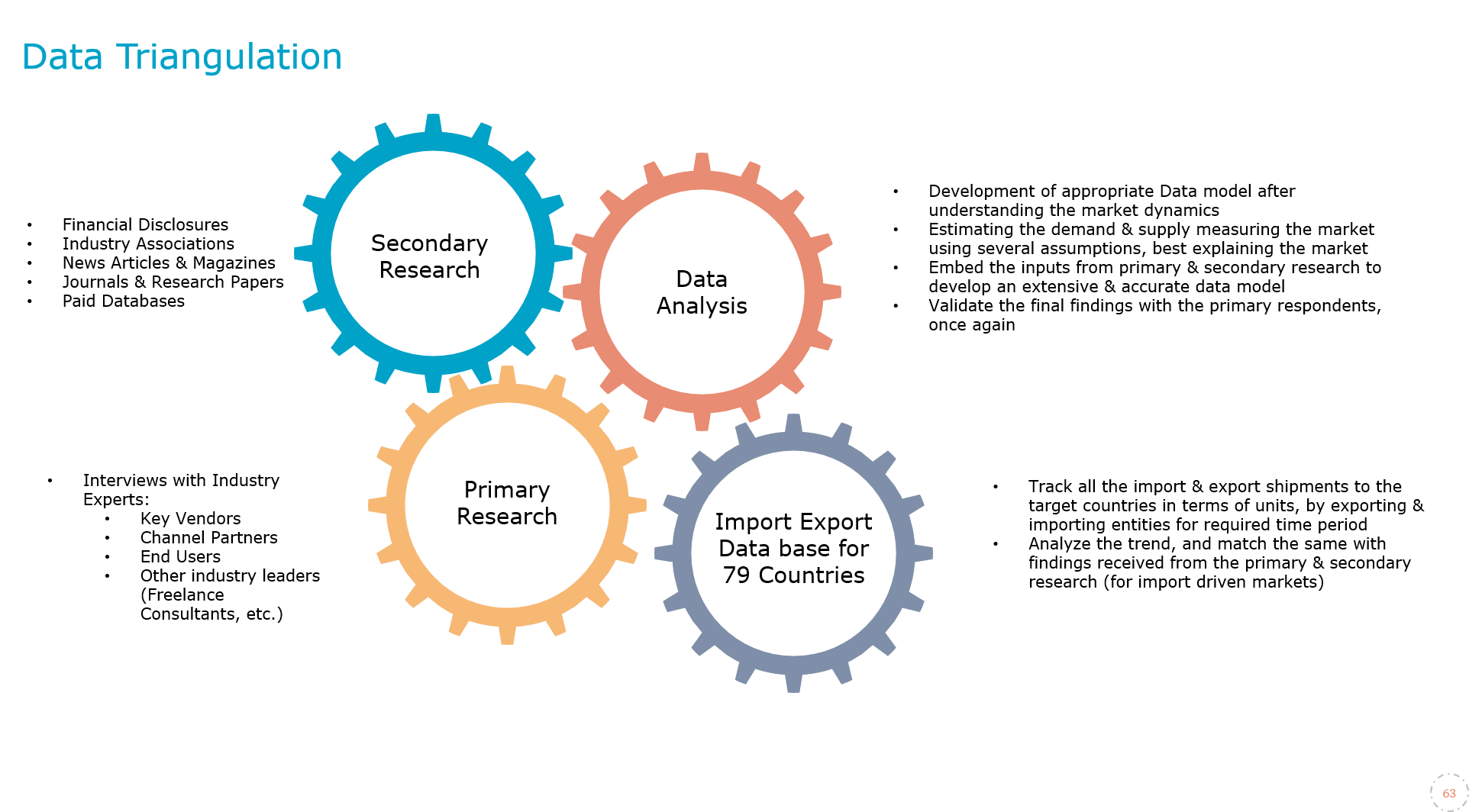
4. Data Forecast and FinalizationThe final phase involves forecasting future market trends based on the analyzed data. MarkNtel Advisors utilize predictive modeling and time series analysis to anticipate market behaviors. The insights are then compiled into comprehensive reports, featuring visual aids like charts and graphs, and include strategic recommendations to inform client decision-making

